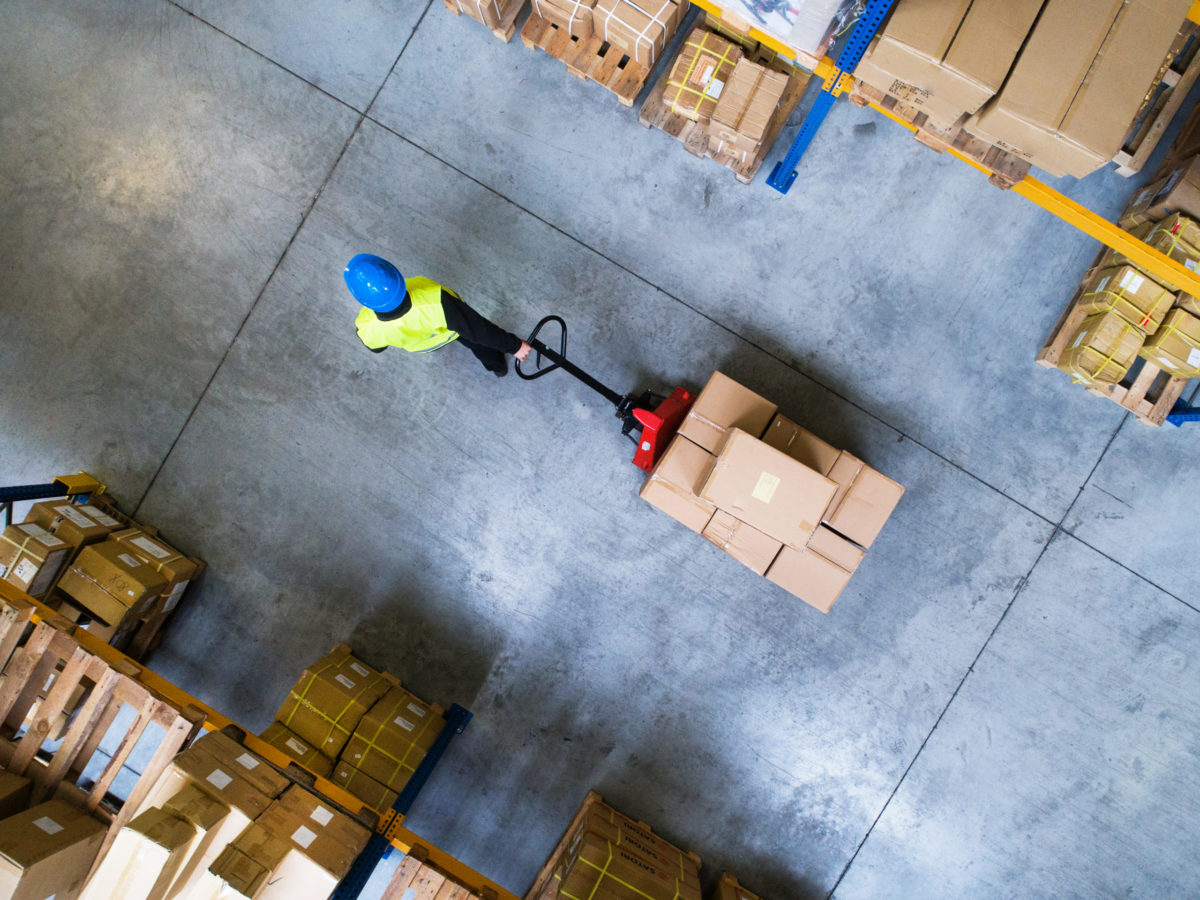Reverse Logistics

What is Reverse Logistics Definition
Reverse logistics is when freight or products get transported from the end user back to a supplier or manufacturer. This can make the supply chain more cost-effective and efficient by recycling or refurbishing gently used products. Some businesses use this process to make sure that toxic materials are properly disposed of. It can also include accepting retail returns, storing seasonal displays, or reusing displays and products from a location that has closed in a new store.
Other names for reverse logistics include reverse flow and reverse supply chain. However, these terms usually refers to what happens when a component goes back only one step, without involving the final customer. For example, a component for manufacturing going back to a supplier before the final product is complete.
The Importance of Reverse Logistics For Your Business
Why do people put effort into the concept of reverse logistics? It helps companies save money and makes the supply chain more efficient. Additionally, it is better for the planet. Increasingly, people want products that are “green” or “eco-friendly.” Sometimes, but not always, they don’t even mind paying a little more for the peace of mind that comes with knowing their purchase is good for the earth.

Through the impact of effective reverse logistics, companies can offer their customers products that are more eco-friendly, while focusing on what is also best for the business – saving money, reusing materials, and managing an efficient supply chain. Thus, they can offer more earth-friendly products in a cost-effective manner.
This concept allows your business to get the most bang for your buck. You tighten up your processes by re-gathering materials and unwanted products that can be re-sold. You can then repair damaged products, use parts from older products in new ones, and redistribute resources as needed.
So, the objectives are to regain value from products that have already been sold. This helps to reduce your expenses and make your overall flow more efficient. Not only is it good for your bottom line, but it’s often good for the planet, as the impact of this process often leads to less waste.
It can include:
- Returns
- Returns avoidance
- Remanufacturing
- Refurbishing
- Packaging
- Unsold goods
- End-of-life
- Delivery Failure
- Rentals & leasing
- Repairs & maintenance
Advantages of Reverse Logistics
As one of the top reverse logistics companies we offer:
- Packing, pick-up, and return to distribution centers
- Packing, pick-up, and transfer for resale of used or refurbished products
- Notifications to recipients about incoming shipments
- 24/7 support (before and after normal business hours)
- Professional teams to:
- Inventory and count items for pick up
- Document condition if needed
- Package, palletized, and load items for transit
- The necessary equipment needed including:
- Packaging materials
- Appropriate vehicle for transporting items
- Straps and bars to secure items on the truck or van
- Transportation
- Documented disposal or recycling of commercial and retail items
- Consolidate in regional/national consolidation center
Reverse Logistics Software
Reverse logistics systems are developed for transparent tracking and convenience in our modern era. A customer portal that handles returns and allows you to see everything happening in real time is necessary. Our customer portal is available in the cloud and is not just for returns management, it is for your whole logistics project. With this supply chain management tool, you can track shipments, place orders, view reports, see reverse logistics courier tracking, and more. What’s even more important is that you can see this information from anywhere you can cell reception or wifi.
Our system is a fully integrated warehouse management system and transportation management system. It can also integrate with many popular 3rd party e-commerce, ERP, and shipping platforms, so you can have everything you need in one place. Our system helps you measure the effectiveness of our plans together with powerful reporting on both qualitative and quantitative data. Using this system, you can track things like return rates, reuse of product, and more.
Retail Reverse Logistics
Reverse logistics in the retail industry are especially relevant right now. With logistics issues caused by COVID 19, retail and online retail logistics are exceptionally important. Consumers expect not only quick delivery but an easy channel for returns. The returns process should be just as easy as the sales process for optimal customer satisfaction. Stores and warehouses need simple ways to process returns and get them back into stock to be resold.
The thing is, there are many ways to do this, and each retailer does it slightly differently. There are different best practices for brick-and-mortar stores and online stores. Retail businesses that offer both have a unique challenge that may require two different ways of accepting returns. Either way, customers need easy and reliable reverse logistics plans. We can work with your business to find the best options that work for you.
Retail reverse logistics strategies include not only how to get the product back to your warehouse or store, but also what you will do with it once it is there. How does it return to the value chain?
In addition to retail we also provide reverse logistics services for:
- Restaurants
- Hospitality
- Electronics
- Medical equipment
- And more
Reverse Logistics Store Closures
Another important component of retail reverse logistics is what to do when a store closes. Unsold product, displays, shelving, and electronics should be put back into the business so you can retain their value. Creating a solid logistics plan with a trusted partner can help you do just this.
In one of our success stories, we share about our client, a major US retailer. They were closing several of their stores and moving products to stores that would remain open. We came up with a plan to call each closing store 21 and 7 days before the move, to help them prepare, give them essential information on how to package items, and. find out if they needed any supplies or assistance. We also called each of the receiving stores on the same timeline. This helped to increase transparency and create a fully coordinated effort.
White Glove Service
Even when taking products and materials back, white glove service may be a useful tool in the reserve logistics arsenal. With this extra level of attention, our teams will do more than just pick up and drop off. They can take apart displays and furniture at a closing store. They can come inside the location, get the packages, and then deliver them to a preferred room or area of the warehouse upon delivery. We can also coordinate very specific timing to get your delivery where it needs to be in a relatively tight timeframe.
How to Improve Reverse Logistics
Reverse logistics is an important part of any business. Just like any business process, it is important to continually improve on it. What can we do together to improve your reverse logistics system?
- Review your returns policy. Retail return policies vary from business to business. We go over yours with you to make sure it is as clear as possible. A clear return policy leads to faster returns and is a key component to improved customer service.
- Use technology. In our digital age, every part of your reverse logistics plan should be easily trackable online. With more people working remotely, this is more important than ever.
- Transparency. Knowing the data can help you continuously work on your reverse logistics process. Knowing why products get returned can help you prevent returned items in the future. Knowing exactly what happens to each returned product or if there are defective products gives you data you can use for the future.
Don’t see the retail reverse logistics solution you are looking for here? Contact one of our specialists to come up with a customized plan.


